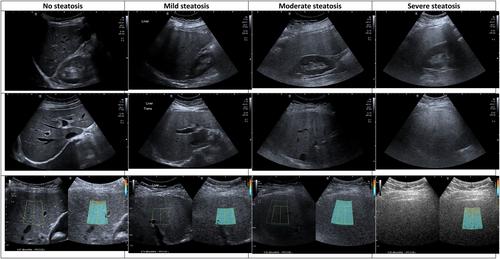Globally, B-mode ultrasound is the most common modality used for the diagnosis of hepatic steatosis. We aimed to assess the correlation between qualitative liver ultrasound parameters, attenuation imaging (ATI) and histopathology-diagnosed steatosis grade obtained from liver biopsy. Our secondary aim was to examine the interobserver variability of qualitative ultrasound features.
A retrospective cohort study was performed which included adult patients (age ≥ 18 years) who had same-day liver ultrasound, ATI and liver biopsy for grading hepatic steatosis severity between 2018 and 2022. The qualitative US features for hepatic steatosis were independently scored by three radiologists and interobserver variability was examined. Histologic steatosis grade, ATI and qualitative ultrasound parameters were compared.
Ninety patients were included; 67% female with a median age of 54 (IQR 39–65) years. The radiologist's overall impression had the highest correlation (very strongly correlated) with histologic steatosis grade (r = 0.82, P < 0.001). ATI coefficient and all qualitative ultrasound B-mode features except for liver echotexture and focal fat sparing were strongly correlated with histologic steatosis grade (r ≥ 0.70, P < 0.001). Most qualitative ultrasound features had good agreement between observers (Kappa statistic 0.61–1.0, P < 0.001), (Kendall coefficient 0.92, P < 0.001).
The examined qualitative ultrasound parameters and ATI had good-excellent performance for diagnosing clinically significant hepatic steatosis; however, the radiologist's overall impression had the best correlation with histologic steatosis grade. Our findings suggest an ongoing role for qualitative liver ultrasound assessment of hepatic steatosis despite the emergence of newer quantitative measures.



